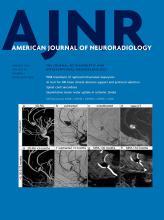With great interest, we read the article by Raymond et al,1 which described the results of the Flow Diversion in the Treatment of Intracranial Aneurysms Trial. This parallel-group, pre-randomized, controlled, open-label, all-inclusive, pragmatic care trial included 278 patients from 3 centers in Canada during 10 years (2011–2020). In this study, patients who underwent flow diversion (FD) had significantly fewer poor outcomes than patients receiving alternative standard management options (ASMO; relative risk, 0.68; 95% CI, 0.50–0.92). The authors concluded, “For patients with mostly unruptured, large, anterior circulation (carotid) aneurysms, FD was more effective than the alternative standard management option in terms of angiographic outcome.” The authors conducted an all-inclusive care trial because previous trials lacked comparison with routine clinical practice and compared FD only with a specific alternative strategy. This all-inclusive policy is convenient because there is no widely supported consensus on which patients are suitable for FD, and stringent selection criteria may have limited center participation. Nevertheless, there is also a significant downside to this approach.
In this study, patients were eligible for inclusion if they had “an aneurysm for which FD was considered a promising treatment.”1 Because of lacking clinical consensus, the study population was dependent on local practice and preferences. In such cases, it is too early to perform a randomized controlled trial (RCT) that will generate conclusions that will be supported by the community and implemented in routine practice. However, varying local treatment algorithms also have great potential to evaluate safety and efficacy outside the scope of an RCT. In comparative effectiveness research (CER), one uses varying center-specific treatment algorithms as an instrumental variable to evaluate clinical interventions on observational data.2 Such research will facilitate clinical consensus on patient eligibility for FD treatment and works as a stepping stone for future RCTs.3,4 For now, without a clearly defined target population, it is difficult to assess the generalizability of the results of this study.
Furthermore, in the primary analysis, the authors found a significant difference in good outcome (a composite outcome of mRS < 3 and complete or near-angiographic occlusion) between FD and ASMO therapies. This difference was driven by a higher rate of complete angiographic occlusion in the FD group. This is problematic because the patients in the ASMO group were allowed to be treated conservatively and were consequently scored with “incomplete occlusion.” This feature has created an imbalance between study groups and complicates the interpretation of the results. Alternatively, it would have been more informative to limit inclusion to patients who actually received aneurysm treatment.
Last, to investigate the heterogeneity of the treatment effect, the authors conducted a subgroup analysis by adding interactions to the model between baseline characteristics and treatment assignment. This approach requires a much larger sample size, and interactions are usually selected parsimoniously. The authors also conducted a conventional subgroup analysis by reporting the treatment effects stratified per subgroup. On the basis of these results, they concluded that FD was more effective than ASMO for each subgroup with a significantly different treatment effect. However, the study was underpowered to draw such specific conclusions. At best, these results can be interpreted as a motivation for future research.
In conclusion, the authors have conducted a challenging and ambitious trial, and even with its limitations, the higher rate of aneurysm occlusion is promising and mandates future research. We recommend first conducting a survey study to examine FD practice variability and afterward conducting CER as a stepping stone for future RCT development. This approach has the highest probability to generate conclusions that could lead to adoption of FD therapy in routine practice and thus aid in minimizing research waste.
Footnotes
Disclosure forms provided by the authors are available with the full text and PDF of this article at www.ajnr.org.
- © 2023 by American Journal of Neuroradiology












